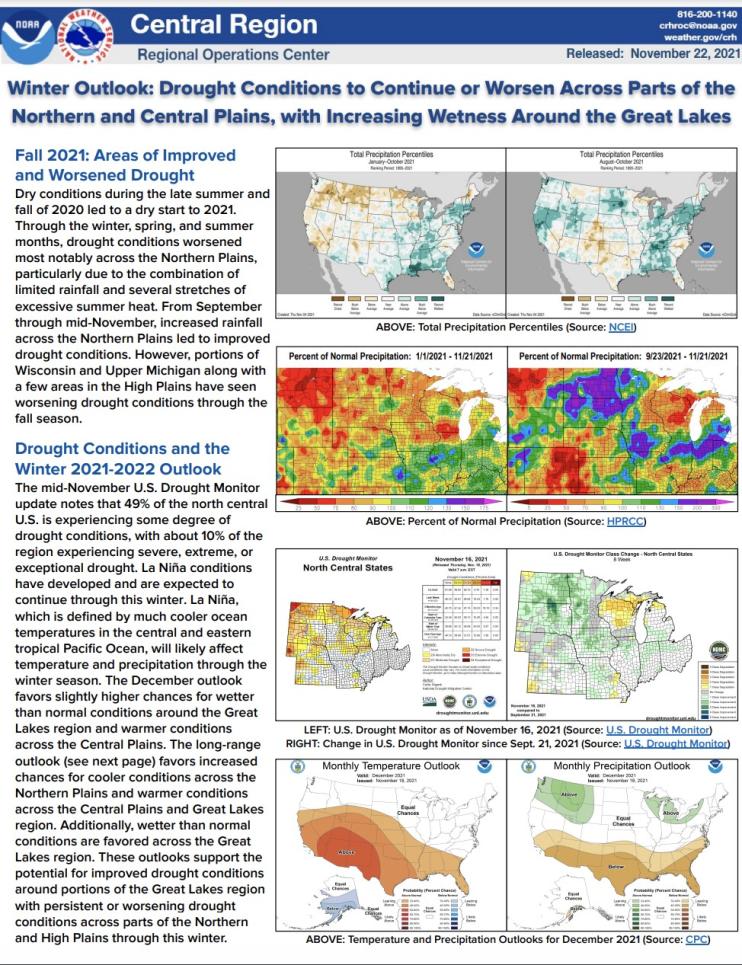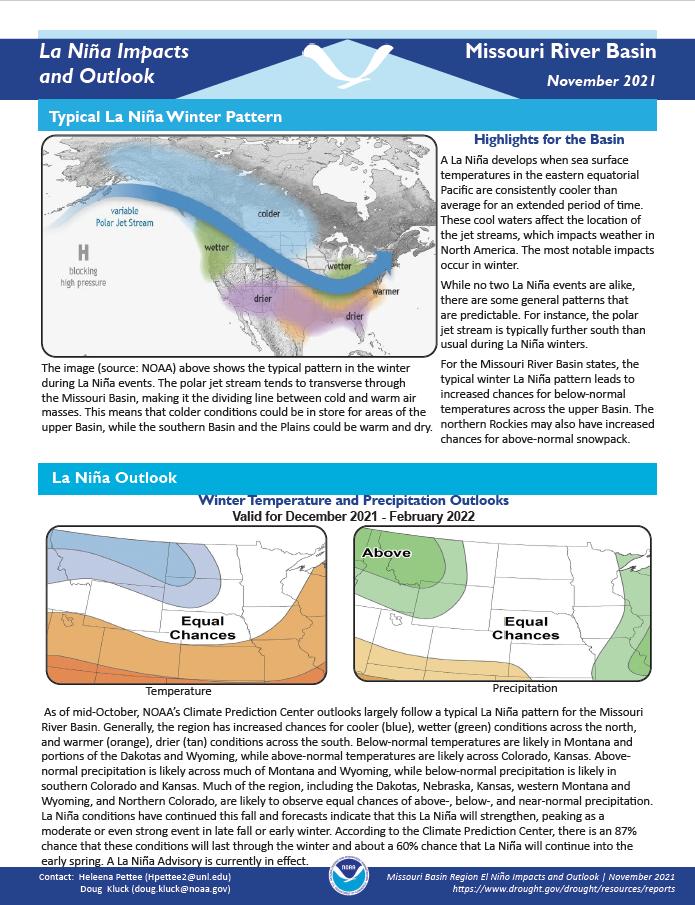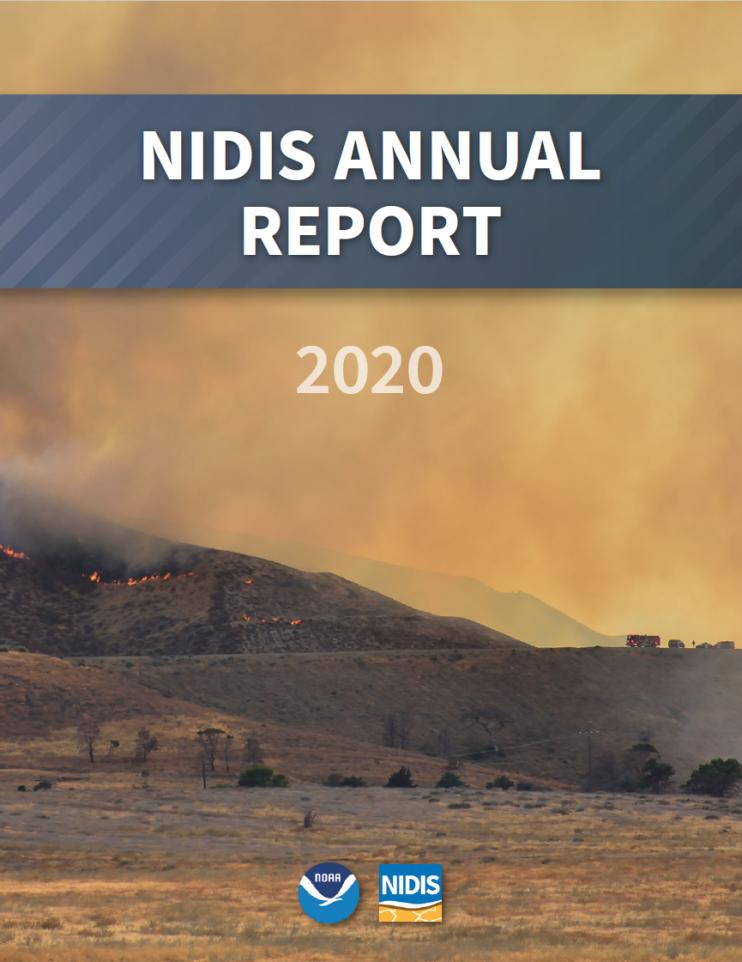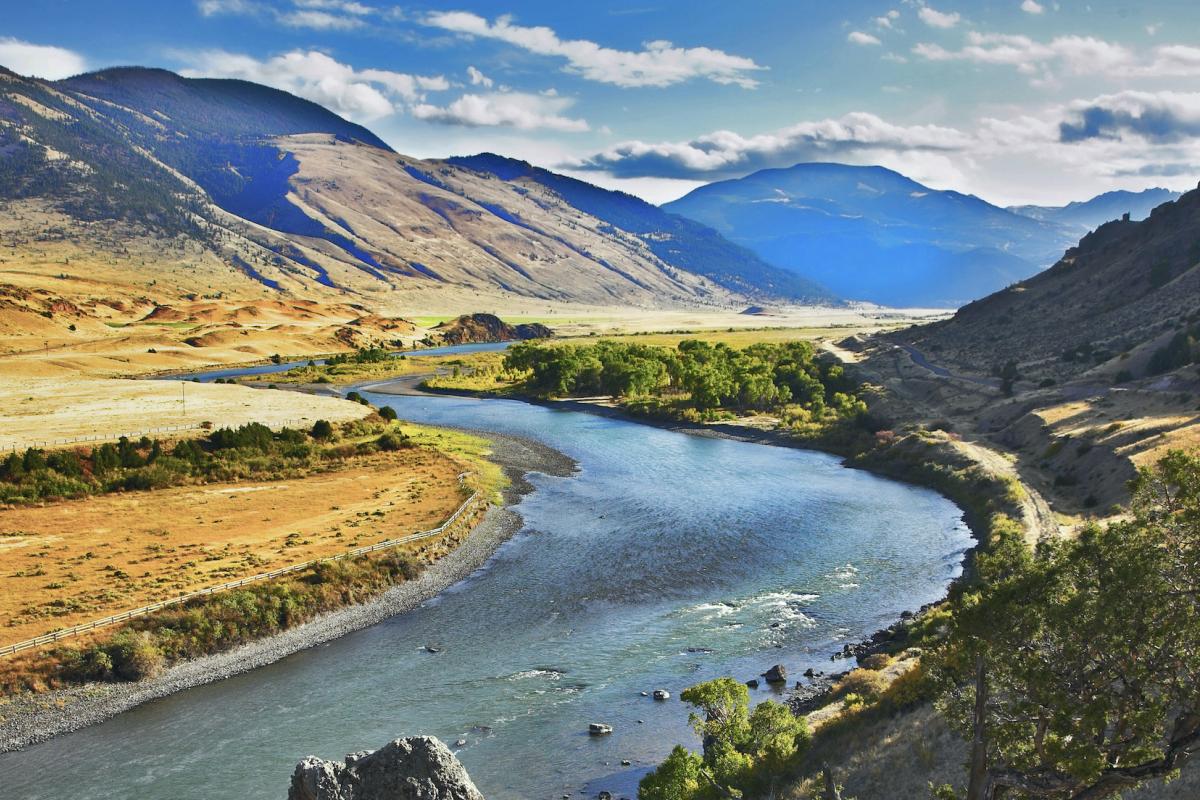For the latest forecasts and critical weather information, visit weather.gov.
Since 2011, the National Oceanic Atmospheric Administration’s Central Regional Climate Services Director, American Association of State Climatologists, U.S. Department of Agriculture Climate Hubs and Office of the Chief Economist, National Drought Mitigation Center (NDMC), and National Integrated Drought Information System have partnered to provide monthly climate and drought updates to stakeholders who live, work, or have interests in the North Central U.S.
The National Weather Service Central Region developed 2021–2022 Winter Hazard Outlooks in coordination with NOAA's National Centers for Environmental Information and National Integrated Drought Information System (NIDIS); U.S. Department of Agriculture; High Plains Regional Climate Center; and National Interagency Fire Center's Geographic Area Coordination Centers. This outlook highlights the various Winter hazards that could occur and potential impacts across the North Central U.S.
This handout provides information on the typical La Niña winter pattern; the La Niña outlook; potential winter and spring impacts; and comparisons of conditions during previous La Niña years for the Missouri River Basin region. Updated November 2021.
NOAA’s Regional Climate Services Program created these outlooks to inform the public about climate impacts within their respective regions. Each regional report contains easy-to-understand language, and anyone can access them through the Drought Portal.
The National Integrated Drought Information System (NIDIS) is pleased to share our 2020 Annual Report to provide insight into the many accomplishments of the program over the previous year and the opportunities that lie ahead. The year 2020 was exceptionally difficult for people worldwide, as the COVID-19 pandemic ravaged the globe and altered almost every facet of daily life. Not only was 2020 a significant drought year for the United States, it also brought record-breaking heat and devastating wildfires.
This article in the Proceedings of the National Academy of Sciences of the United States of America (PNAS) was the result of NIDIS-supported research. Learn more about this research.
Drought represents a globally relevant natural disaster linked to adverse health. But while evidence has shown agricultural communities to be particularly susceptible to drought, there is a limited understanding of how drought may impact occupational stress in farmers.
Quarterly Climate Impacts and Outlook for the Missouri River Basin June - August 2021. Dated September 2021.
Extreme heat and reduced precipitation in the region this summer had a major impact on crops, grasslands, and wildlife. Many states ranked in the top 10 warmest summers on record. Below normal precipitation was present this season for most of the region.
Severe, extreme, or exceptional drought conditions have become increasingly common throughout the western United States over the past 20 years. Abnormally dry conditions can lead to a wide range of negative economic impacts across a wide range of sectors that either directly or indirectly depend on weather-dependent ecosystem services.











